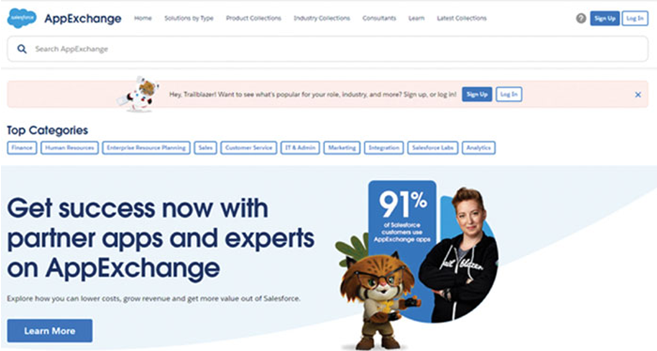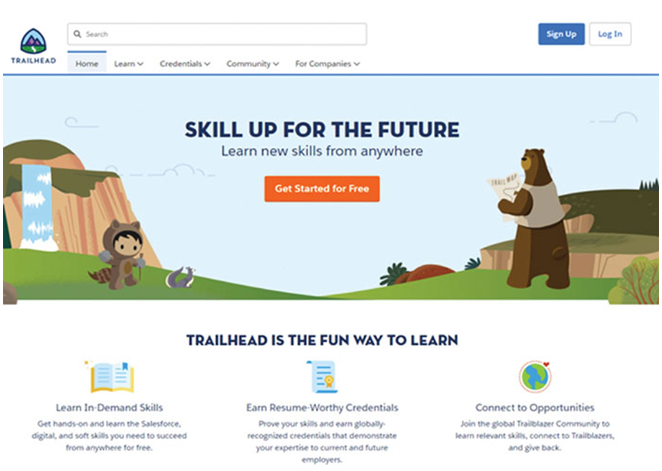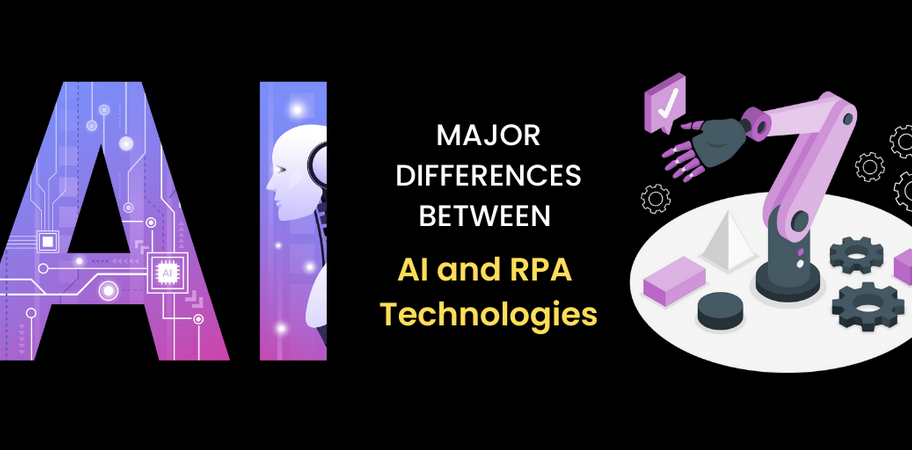As mentioned earlier, Salesforce is the pioneer in providing SaaS CRM software. It was the first to provide cloud-based CRM software. There was no need to maintain the infrastructure for running the software. All you needed was an internet connection. You could log in to Salesforce using the internet and use the tool. This gave it a head start when the world of technology was shifting from on-premise to cloud technology. Back then, Siebel was the number one CRM, but it was costly to build and maintain. Salesforce provided a cloud-based and relatively affordable version of a CRM.
In 1999, Marc Benioff started Salesforce with the idea that CRM software should be affordable, available to the masses 24/7, and based on the global cloud platform. With its affordable cost compared with other options available at that time, and its easy–to-use and user-friendly features, it soon started becoming popular. Its growth was phenomenal. The company extended its offering from Sales Cloud (for managing sales process) to Service Cloud (for managing customer care representatives) to Marketing Cloud and Pardot (for B2C and B2B marketing, respectively). As it saw opportunities in the market, it kept on improving its product lines, either by building the product in-house or through acquisitions.
Back then, creating a quote for a sales representative was a difficult and time-consuming task especially if the products were complicated in nature. SteelBricks CPQ (configure, price, and quote) software helped sales users create quotes seamlessly and send them to their customers. Salesforce acquired SteelBricks CPQ and later renamed it Salesforce CPQ. Similarly, it kept acquiring companies to expand its product lines, acquiring Demandware to create Commerce cloud, and acquiring Tableau to create Tableau CRM and Slack for communication, among others.
Salesforce also provides easy-to-integrate features with other leading applications like ERP solutions, billing solutions, marketing platforms, and so on.
One of Salesforce’s design policies is to use less code and more point-and-click-based development. This is the reason why Salesforce is very easy to use and customize, even for those who don’t know how to code. It is very user-friendly for business users and non-technical users. Business users can do a lot of the work themselves without using any technical help. This helped Salesforce become very popular among business users.
In the year 2022, Salesforce had a revenue of $26.5 billion. It has the highest market share among CRM players. (Source: https://www.statista.com/statistics/972598/crm-applications-vendors-market-share-worldwide/#:~:text=Salesforce%20is%20the%20leading%20vendor,percent%20shares%20of%20the%20market.)
Here are the top five reasons why Salesforce is one of the top CRM tools:
- It is scalable and fits the requirements of small companies as well as large global enterprises
- Its user interface is user-friendly and easy to customize without the need for extensive coding
- It provides powerful process automation tools which even business users can use to create process automation
- Salesforce has a lot of applications for managing different business processes like sales, service, marketing, commerce, order management, and so on. So you don’t need to have separate software vendors for different business processes.
- It has a well-developed partner ecosystem called the Salesforce AppExchange where one can find applications for various business needs which are not present in the core Salesforce platform, as well as consultants who can help you implement and get the most out of your Salesforce application. Salesforce AppExchange is like a Google Play Store or an Apple store from where you can install applications. We will have a detailed discussion about Salesforce AppExchange later.

Figure 1.3: Salesforce AppExchange Website (https://appexchange.salesforce.com/)
Salesforce has a few core philosophies to which it adheres. First, it wants to make its platforms very easy to use and customize. It has many out-of-the-box solutions as well as provides many tools using which you can customize the CRM applications by using clicks and no code. Salesforce’s Click and no Code philosophy helps it become popular among business users as well as those who are not very hands-on with coding. Salesforce is easy to learn and easy to get started with. It has a dedicated website for gamified learning called Salesforce Trailhead (https://trailhead.salesforce.com/). Using trailhead, anyone can learn Salesforce very easily.
Along with learning Salesforce from Trailhead, it is a good idea to create your own free developer org to practice what we teach in this book as well as what you will learn in trailhead. Creating a Salesforce developer account is completely free, and you don’t need to share any card details.
You can sign up for a free developer account by providing the relevant information on this page: https://developer.salesforce.com/signup.
Our suggestion will be to create the account and keep it handy. You can check out the concepts on the org as we discuss them in this book.

Figure 1.4: Salesforce Trailhead Website-https://trailhead.salesforce.com/
The second important philosophy it has is to provide companies with a 360-degree view of their customers. Salesforce has applications that help you holistically understand your customers. From marketing to sales to order management to customer service to analytics, it helps you track what is going on with your customers all within the same platform. This unlocks immense value for companies that use Salesforce.

